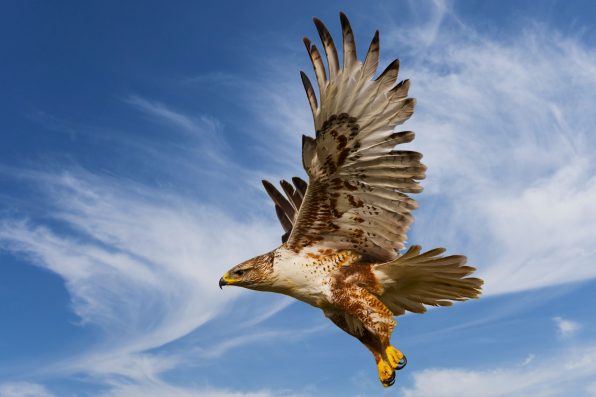Ferruginous Hawks That Winter In California Have Been Unexpectedly Thriving, Despite Declining Population Numbers In Preferred Grassland Habitats For Over Two Decades

Ferruginous hawks that spend their winters in California have been unexpectedly thriving. Yet, their numbers have been significantly declining in their preferred grassland habitats for over 20 years.
In contrast, many other species of grassland birds are following the projected trend, with their populations going down as more and more of the open areas they inhabit are lost.
In a new paper, a team of researchers is outlining possible explanations for the species’ growth. Ferruginous hawks (Buteo regalis) are difficult to study because they do not show up consistently at migration sites.
Unlike other hawks, they do not concentrate along common topographical features like ridges. As a result, there is a lot of conflicting data on their populations, so their conservation status varies across different regions and countries.
Many of the hawks wintering in California breed in Washington or Oregon, where they are classified as endangered and sensitive-critical.
The research team analyzed citizen science data from the Washington and Oregon wintering grounds to untangle the species’ mixed population trends.
They examined five Bird Conservation Areas in California, where Christmas Bird Counts (CBCs) were carried out from 1998 to 2022. Every December, CBCs are organized by volunteers and bird-related organizations.
Their counts help provide a clearer picture of the hawks’ range than what typical research efforts could achieve.
The team’s analysis revealed that the hawks’ habitat quality has declined significantly over the span of 25 years. But during that same period, the numbers of ferruginous hawks actually increased in winter across California.

Sly – stock.adobe.com – illustrative purposes only, not the actual hawk
The finding was surprising since the species has been declining in Washington, where many of these hawks breed and raise their chicks.
“Grassland species are nearly all in long-term, continent-wide declines. Our findings offer a small ray of hope these hawks can continue to persist,” said Edward Pandolofino, the lead author of the study from the U.S. Fish and Wildlife Service.
One potential reason for their resilience in California could be that ferruginous hawks have a preference for larger prey, such as black-tailed jackrabbits, compared to raptors living in the same habitat.
It’s also possible that ferruginous hawks have learned to use inactive croplands as a new habitat and started eating a broader diet.
These findings suggest that raptor populations in open habitats have more complex population dynamics than previously assumed, even in the face of habitat decline.
Since young ferruginous hawks experience high mortality rates during their first year of life, it’s crucial to know what challenges and conditions they encounter in their non-breeding grounds.
“Nearly every acre of ferruginous hawk habitat surveyed for this paper is on private cattle ranches,” Pandolofino said. “In California, the survival of this hawk is completely dependent on cattle ranching continuing to be a viable way to make a living.”
Ferruginous hawks are apex predators, so they indicate the overall health of their environment. Hopefully, the researchers can raise awareness of the threats that grassland birds are under and preserve their diminishing habitats.
The paper was published in the Journal of Raptor Research.
Sign up for Chip Chick’s newsletter and get stories like this delivered to your inbox.
More About:Animals





